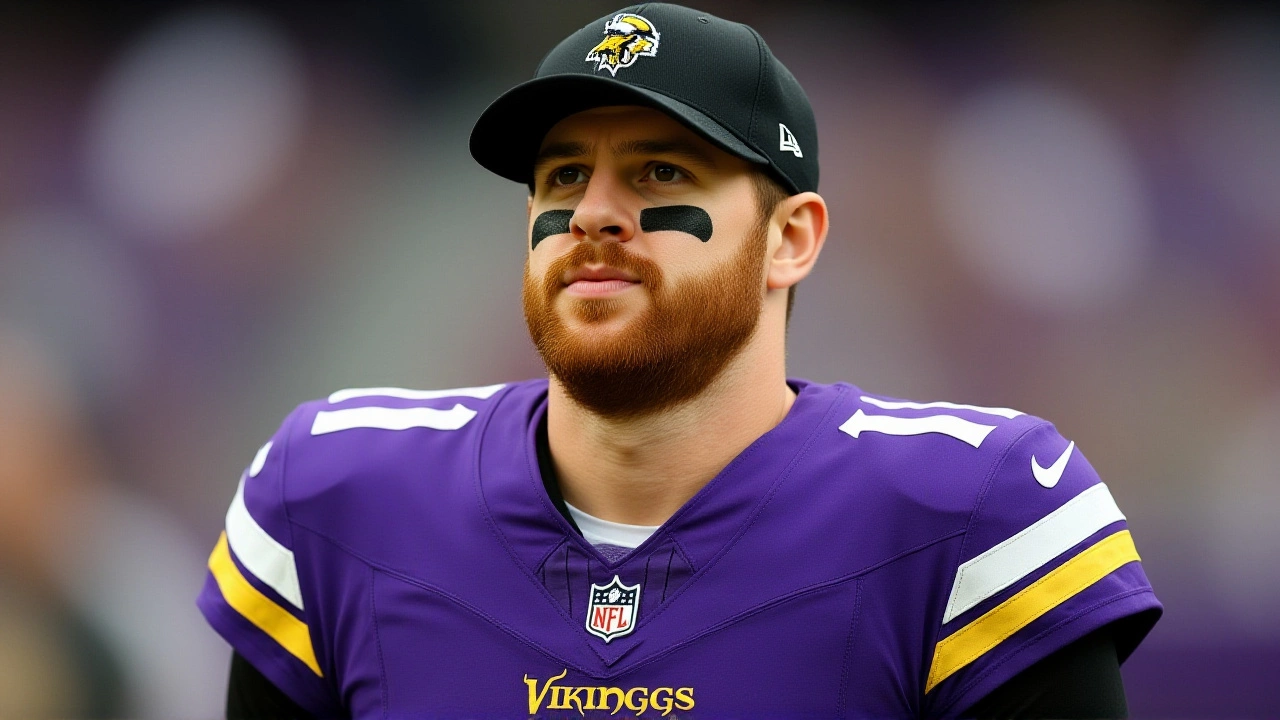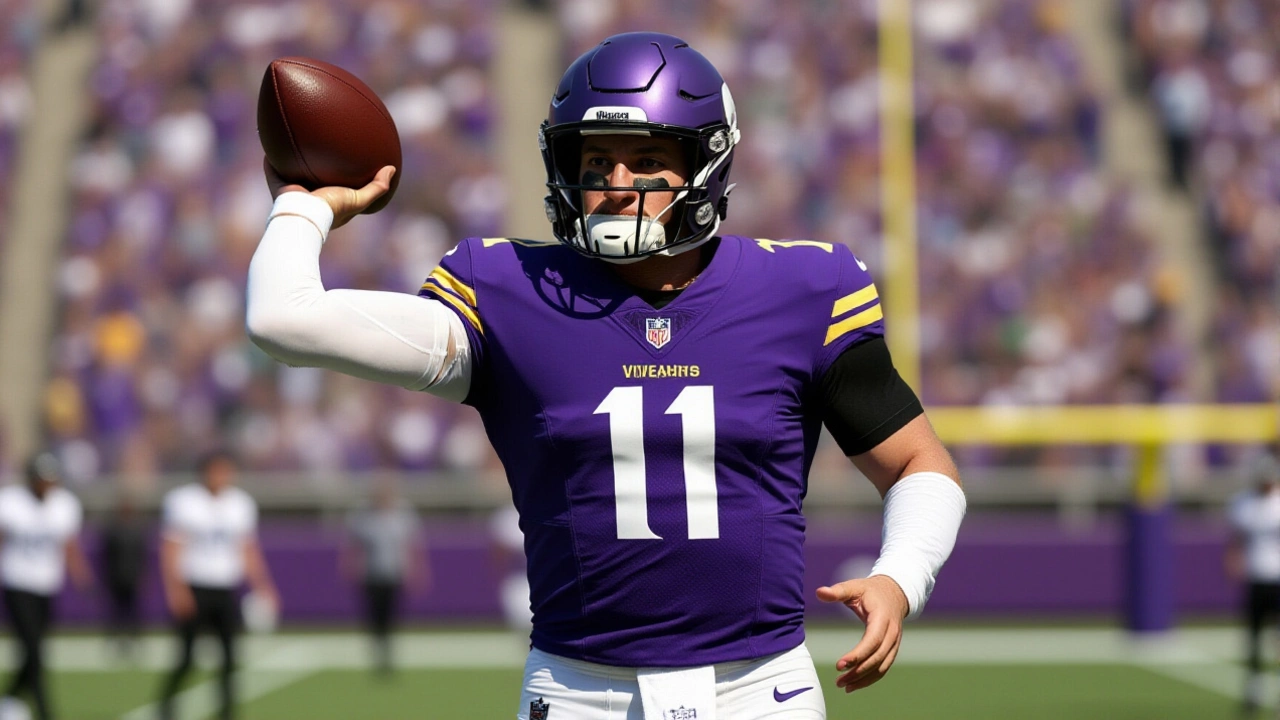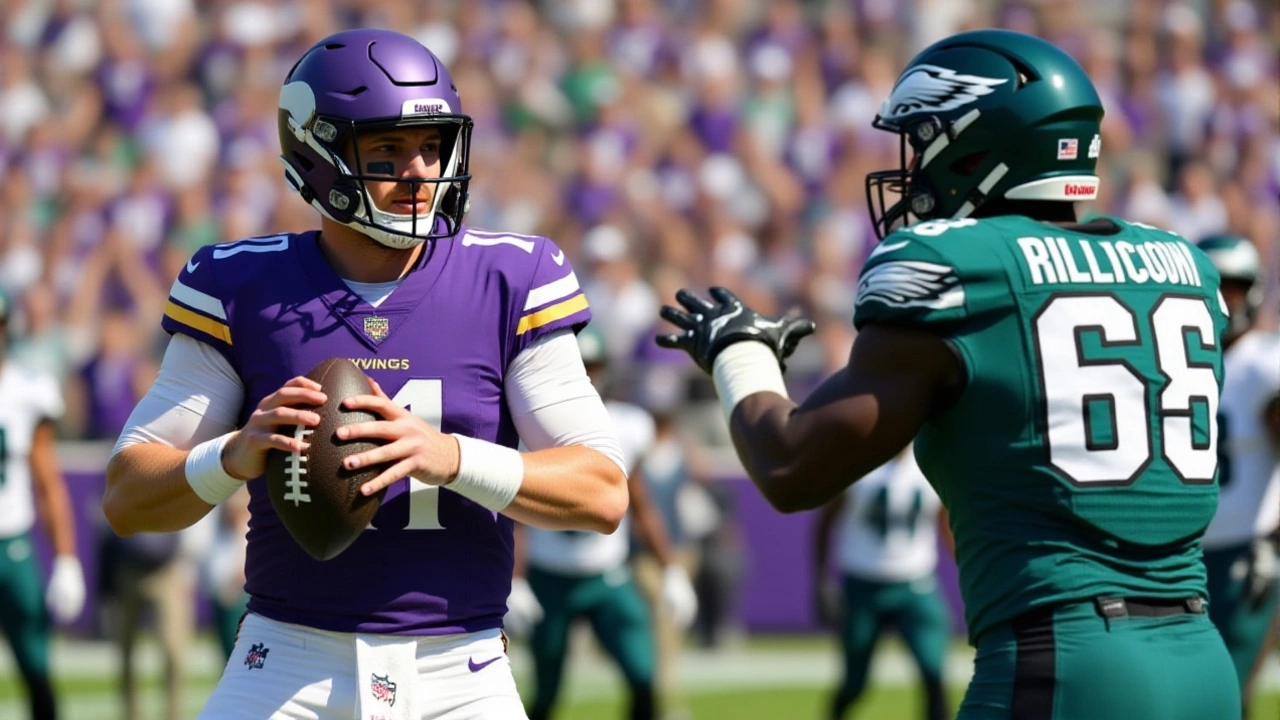When Kevin O'Connell, head coach of the Minnesota Vikings, announced that Carson Wentz, the team’s starting quarterback would take the field on Thursday night, few could have predicted the fireworks that would follow at SoFi Stadium.
Background to the Quarterback Decision
The Vikings entered Week 8 of the 2025 NFL season juggling a revolving door at the quarterback spot. After a 2‑1 start, injuries and inconsistent play forced O'Connell to adopt a rotation strategy that kept fans guessing every Sunday. By October 20, the coaching staff had settled on Wentz, a former No. 2 overall pick who’d spent his early career in Philadelphia before bouncing around several teams. The move was more than a tactical tweak; it was a vote of confidence, a signal that the franchise believed Wentz still had the "toughness" needed to steer the ship.
Wentz’s résumé reads like a road‑trip playlist: a Pro Bowl nod in 2017, a Super Bowl ring with the Eagles in 2018, and a reputation for hard‑nosed play. Yet his recent stats – a 68.4 % completion rate and just three touchdowns in his last seven starts – left many analysts wondering if the Vikings were betting on a veteran’s poise or simply filling a roster gap.
Game Summary and Key Moments
The Chargers, fresh off a 31‑24 win over the Raiders, arrived in Inglewood with a fire‑breathing offense led by quarterback Justin Herbert. The early drives were a clash of bulldozers: Herbert’s arm, Wentz’s patience. By the end of the first quarter, the Chargers had already struck twice – a 31‑yard touchdown run and a 45‑yard field goal – putting the Vikings on the back foot.
- Quarter 1: Chargers 14, Vikings 0
- Quarter 2: Chargers add 10, Vikings reply with a 24‑yard touchdown pass to Jordan Addison.
- Quarter 3: Chargers dominate, scoring 13 points on a 23‑yard field goal and a 5‑yard rushing TD.
- Quarter 4: Final score settles at 37‑10.
Wentz’s moments of resilience shone through the haze. After a sack that left him sprawled near the sideline, he shrugged it off, scrambled for a first down, and later connected on a 22‑yard pass that set up the lone Vikings touchdown. The play‑call, however, grew predictable. The Vikings’ offensive line allowed 5 sacks, and their tight ends were left isolated, turning what could have been a balanced attack into a series of long‑yard throws and quick outs that never quite stuck.
Coaching Perspectives
In the post‑game press conference, O'Connell tried to keep the tone measured. "Carson showed the kind of toughness we need, but football is a team sport," he said, tapping the clip on his tablet. He added that the offensive line’s woes were "systemic" and not "a reflection of any single player’s effort." The coach also hinted at a possible schedule‑adjusted practice focus on pass‑protection before the next road trip.
Meanwhile, Chargers head coach Anthony Lynn praised his own unit’s execution. "We stuck to the game plan, attacked their gaps, and forced them to play from behind," he said, flashing a grin that said the Chargers felt comfortable atop this particular matchup.

Statistical Breakdown
Numbers tell the story that words sometimes hide. The Vikings finished with a total of 248 yards of offense – 152 passing and 96 rushing – while the Chargers amassed 425 yards, split fairly evenly between air and ground. Turnovers were starkly different: Minnesota fumbled once and threw one interception, whereas Los Angeles protected the ball with two zero‑turnover quarters.
On third‑down, the Vikings converted just 2 of 12 attempts (16.7 %), compared with the Chargers’ 8 of 13 (61.5 %). Red‑zone efficiency tells a similar tale: Vikings entered the 20‑yard line three times, leaving with only one touchdown; Chargers entered five times and walked away with four touchdowns.
Implications for the Vikings' Season
The loss dropped Minnesota’s record to 3‑4, leaving them perched in the NFC North’s middle tier. With only two games left against division rivals, the margin for error has thinned. The offensive sputtering has sparked talk of a possible roster shake‑up at the line of scrimmage, and the front office might look to free‑agency or the draft to buttress protection schemes.
Wentz, now 32, faces a fork in the road. His contract runs through the 2026 season, but the Vikings might weigh his durability against younger options such as J.J. McCaffrey’s development as a dual‑threat. If the team can tighten the pocket, Wentz’s experience could still translate into crucial wins.

Future Outlook
Looking ahead, the Vikings travel to Green Bay for a Week 9 showdown against the Packers on Saturday, October 31. Analysts predict a low‑scoring affair, given the weather forecast mimicking a November chill in Wisconsin and both teams’ recent offensive struggles. O'Connell hinted that the game plan will "lean on the run" and feature "quick, high‑percentage passes" to mitigate pass‑rush pressure.
For the Chargers, the victory cemented their status as a playoff contender, propelling them to a 5‑2 record. Their next challenge: a Sunday night clash with the Kansas City Chiefs, a battle that could reshape the AFC West hierarchy.
Key Facts
- Final score: Chargers 37, Vikings 10
- Location: SoFi Stadium, Inglewood, California
- Vikings starter: Carson Wentz
- Head coaches: Kevin O'Connell (Vikings) & Anthony Lynn (Chargers)
- Vikings offense: 248 total yards, 2 TDs, 5 sacks allowed
Frequently Asked Questions
How does this loss affect the Vikings' playoff chances?
Dropping to 3‑4 puts Minnesota in the middle of the NFC North race. With only two divisional games left, they’ll need to win both and hope rival teams slip up to stay in the wild‑card mix. The offensive inconsistencies highlighted in this game make the path steeper, but a strong finish could still salvage a postseason berth.
Why did O'Connell stick with Carson Wentz despite the poor offensive output?
O'Connell praised Wentz’s toughness and said the issue lay with protection and play‑calling, not the quarterback’s effort. Keeping Wentz under center also gives the team continuity while they evaluate long‑term solutions at the position.
What were the key factors behind the Chargers' dominant performance?
The Chargers combined a balanced attack, solid pass‑protection (only two sacks allowed), and efficient red‑zone execution. Herbert’s quick decision‑making and a strong defensive front that forced turnovers kept Minnesota on the back foot.
What changes might the Vikings make to improve their offense?
Analysts suggest the Vikings could prioritize bolstering the offensive line through free‑agency signings or the draft, incorporate more play‑action to free up Wentz, and lean on the running game to take pressure off the passing attack.
When is the Vikings' next game and who are they facing?
Minnesota heads to Green Bay for a Week 9 matchup against the Packers on Saturday, October 31, 2025. The weather forecast calls for chilly, windy conditions, which could further test the Vikings' struggling offense.
